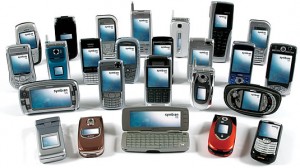Brad Kalbfeld, former AP broadcast editor, visited class to speak about how technology has changed from the past to the present. He showed the typewriter he used and old school tape recorder he first used when he traveled with the Pope.
He then showed the first laptop he used, which looked like a keyboard and calculator screen combined.
In the past 30 years, we have gone from using heavy, analog devices such as those typewriters and tape recorders to using the smartphones and laptops we use today. And it allows fewer people to do more jobs.
The model of having a reporter, copy editor, section editor/show producer and managing editor working together to produce content for readers/viewers being threatened by a citizen with technology is unfiltered and scary.
Now, there is a race to get citizens to send the information to the copy editor, to filter it.
Readers/viewers are now empowered because they know what they are getting and missing from the filters in between the reporters and the editors.
A citizen journalist presents a tremendous advantage to our ability to consume news: they are present.
If you have a strong, credible brand, people will go to you more often, in part because people are lazy.
News used to be a one-way proposition; today, news has to interact with the consumer.









